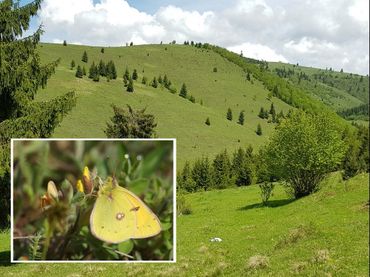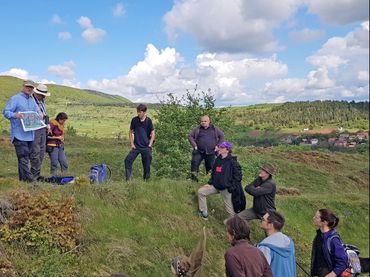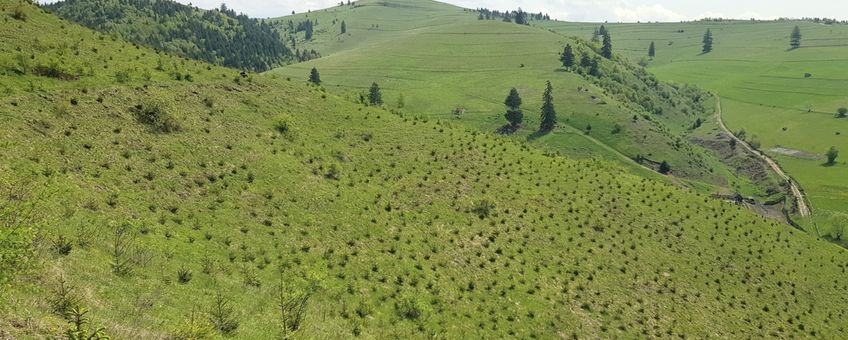 The Danube clouded yellow is a threatened butterfly in Europe. The deep orange color is very noticeable if you manage to discover one. It is a very strong and fast flyer. They usually only stop for very short periods to deposit eggs or visit flowers. The females deposit eggs on broom species (Chamaecytisus).
The Danube clouded yellow is a threatened butterfly in Europe. The deep orange color is very noticeable if you manage to discover one. It is a very strong and fast flyer. They usually only stop for very short periods to deposit eggs or visit flowers. The females deposit eggs on broom species (Chamaecytisus).
However, there are many things unknown and research is needed with questions such as: how long do individual butterflies live? How far do they fly? How do they find a partner? How do the females lay eggs? How do the larvae develop? We do know that the habitats of the Danube clouded yellow are strongly associated with traditional land use on a landscape scale. For its reproduction, the butterfly depends on little fertilized, traditionally used grassland. These grasslands can be mowed or grazed, that doesn't matter, but it is especially important that this is done in phases so that eggs and caterpillars can survive. Stopping mowing or grazing altogether is certainly not a solution, because then the grassland will turn into scrub and eventually forest within a few years. The butterfly and its host plant depend on areas kept open. A new threat is large-scale planting of conifers.

 In Transylvania, the northern part of Romania, traditional land-use is widely preserved. The region is famous for its high natural and cultural diversity. In this landscape, many different parcels of land-use create a mosaic of grasslands, forests and fields, which are used in a variety of different ways and thus contribute to the wider landscape diversity. That's where the Danube clouded yellow can still be found in a few places. However, grasslands where the Danube clouded yellow is present, have already been planted (lead photo). As long as these trees are still small, the butterflies may still be able to survive, but as soon as too much shade comes, the host plant and the butterfly disappear. It is not too late, because the species still exists in three Natura 2000 sites. German researchers from Leuphana University of Lüneburg are working in a project with Romanian experts in the field of agriculture and nature conservation and also working closely together with local communities to develop appropriate conservation measures that also meet the needs of land users. A beautiful, small-scale, biodiverse area is attractive for visitors from outside and if ecotourism is stimulated, the prosperity and well-being of the inhabitants and the survival of the Danube clouded yellow can be guaranteed.
In Transylvania, the northern part of Romania, traditional land-use is widely preserved. The region is famous for its high natural and cultural diversity. In this landscape, many different parcels of land-use create a mosaic of grasslands, forests and fields, which are used in a variety of different ways and thus contribute to the wider landscape diversity. That's where the Danube clouded yellow can still be found in a few places. However, grasslands where the Danube clouded yellow is present, have already been planted (lead photo). As long as these trees are still small, the butterflies may still be able to survive, but as soon as too much shade comes, the host plant and the butterfly disappear. It is not too late, because the species still exists in three Natura 2000 sites. German researchers from Leuphana University of Lüneburg are working in a project with Romanian experts in the field of agriculture and nature conservation and also working closely together with local communities to develop appropriate conservation measures that also meet the needs of land users. A beautiful, small-scale, biodiverse area is attractive for visitors from outside and if ecotourism is stimulated, the prosperity and well-being of the inhabitants and the survival of the Danube clouded yellow can be guaranteed.
More information
Text: Kars Veling, Dutch Butterfly Conservation
Photos: Chris van Swaay




